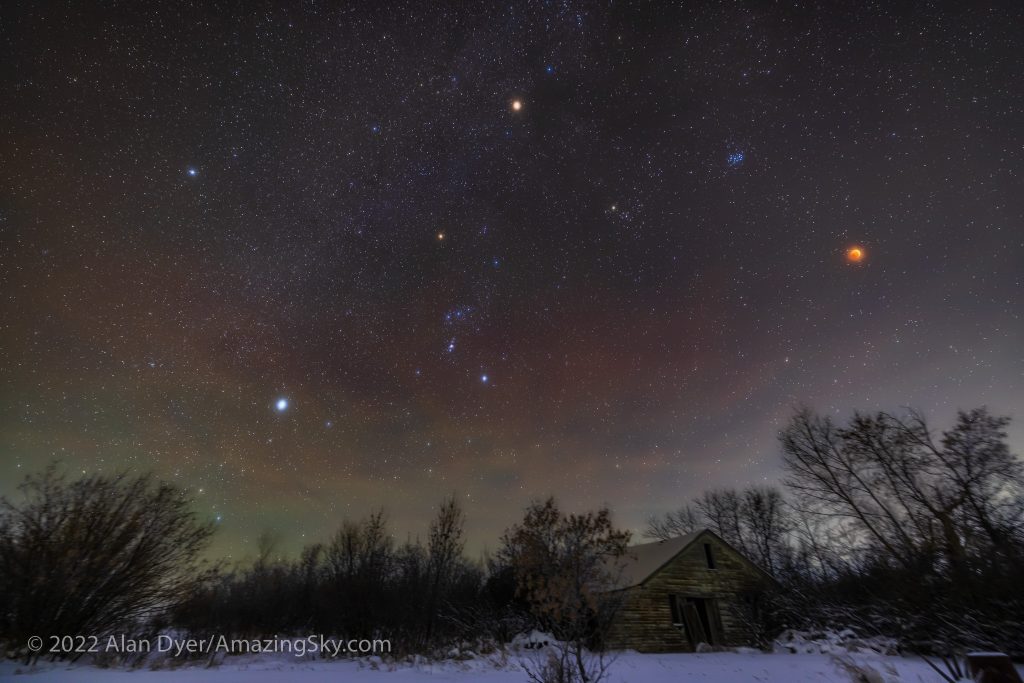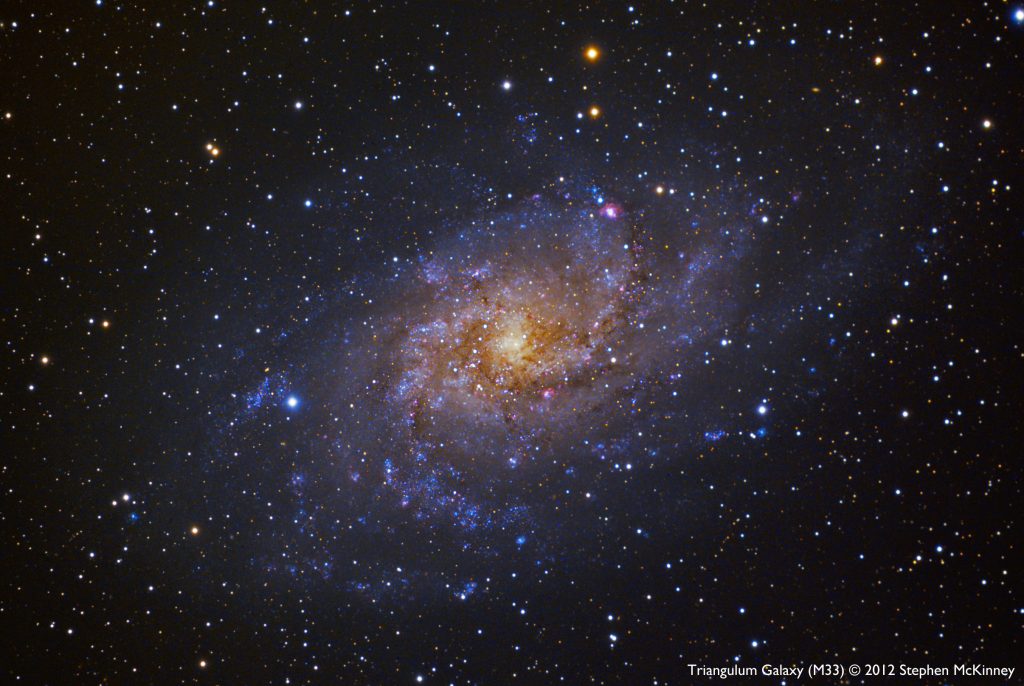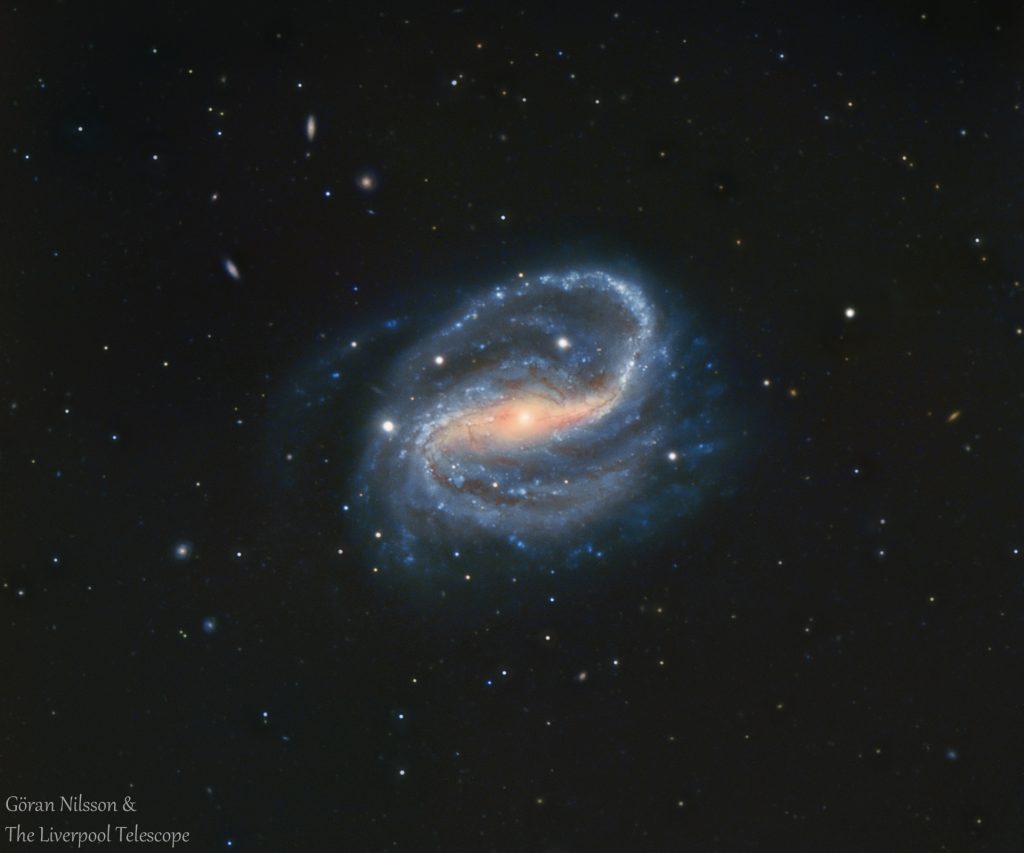Appreciating Pegasus While the Moon Abandons Evening, the Bull Bellows Meteors, and Mars Makes an Impression!
My friend Alan Dyer of Calgary, Alberta captured this wonderful wide-field image of the fully eclipsed moon on Tuesday morning, November 8, 2022. The brilliant white star Sirius (lower left), bright red Mars (top centre), and the blood red moon (far right) surround the winter stars of Orion and Taurus. Enjoy more of Alan’s work…
Read more




